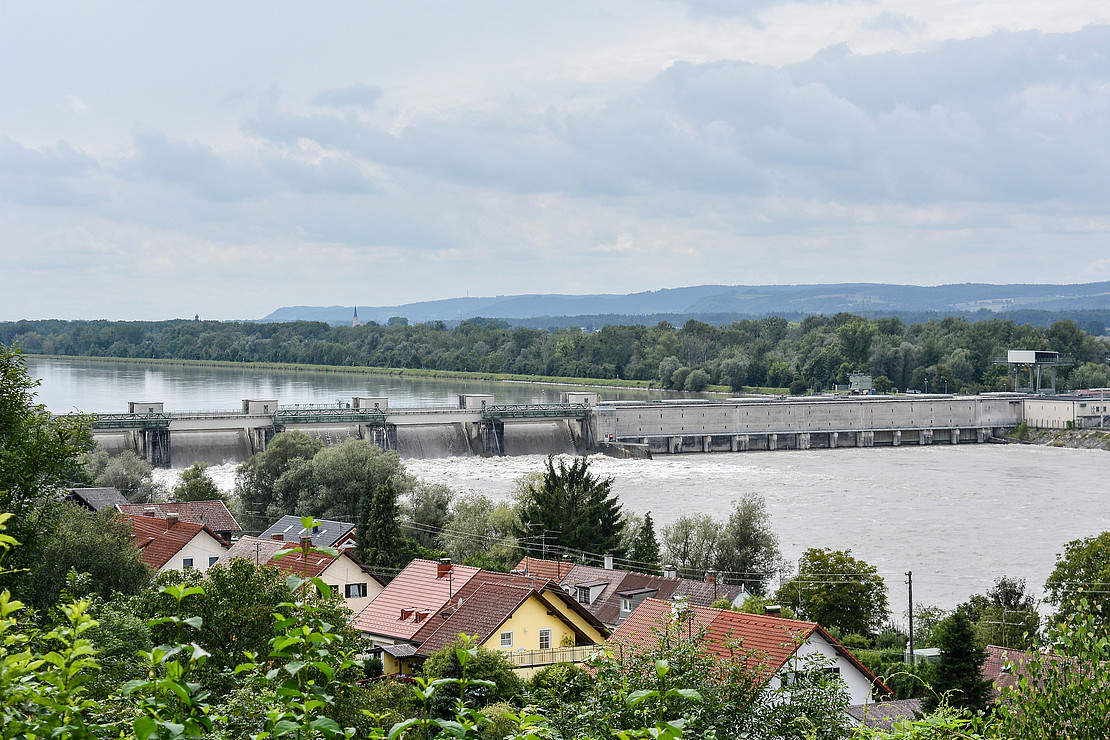This page contains automatically translated content.
Kassel study: Barrage management can reduce flooding
 Image: Isiwal.
Image: Isiwal.Extreme weather events have repeatedly led to flooding in recent years. Where large rivers are affected, which are regulated by barrages, these structures could significantly reduce flooding. This was the result of an extensive study carried out by Prof. Dr.-Ing. Stephan Theobald and Dr.-Ing. Sarah Dickel from the University of Kassel for the Bavarian State Office for the Environment. They investigated the corresponding potential of the numerous barrages on the Bavarian Inn, where a major flood in 2013, for example, caused devastating damage in Passau, but also in numerous other places. At that time, the Inn reached a record level of 11.60 meters (Passau Ingling gauge) and the Danube 12.90 meters (Passau gauge).
The Kassel researchers came to the conclusion that adapted, intelligent barrage management can lower the water level by eight to 23 centimetres (Passau gauge on the Danube) and 17 to 45 centimetres (Schärding gauge on the Inn) during flood events of different magnitudes. The peak discharge of the flood measured at the Passau-Ingling power plant could be reduced by two to nine percent. The study also considered the overlay with a measurement-based control of a flood polder; the combined control achieves water level reductions of 17 to 36 cm in Passau and even 23 to 68 cm in Schärding. "Barrage management cannot prevent flooding, but it can make a noticeable contribution to flood protection," commented Prof. Theobald. "Just ten or 15 centimetres can make a significant difference for many municipalities and many homeowners, especially during major floods."
The prerequisite is to skillfully coordinate the operation of the barrages during flood warnings. This is made possible by a complex modeling program developed by the scientist at the Department of Hydraulic Engineering and Water Management. In simple terms, it is a matter of first lowering the water levels in front of the barrages during a flood warning or forecast and then raising them again at the right time in order to retain water in the reservoir of the barrages and flatten the peak of the flood wave.
The study area covered the Inn from the Oberaudorf power station to the confluence with the Danube in Passau and the section of the Danube as far as Jochenstein. Fifteen power plants were considered, eight of which were included in the control. The method can be transferred to other river systems - the extent of the effect then depends on the particular characteristics of the watercourse and the barrages.
The study was part of an overall project, the results of which can be found here:
https://www.cee.ed.tum.de/wb/projekte/retentionspotentialstudie-am-inn/
Contact:
Prof. Dr.-Ing. Stephan Theobald
University of Kassel
Department of Hydraulic Engineering and Water Management
E-mail: s.theobald[at]uni-kassel[dot]de